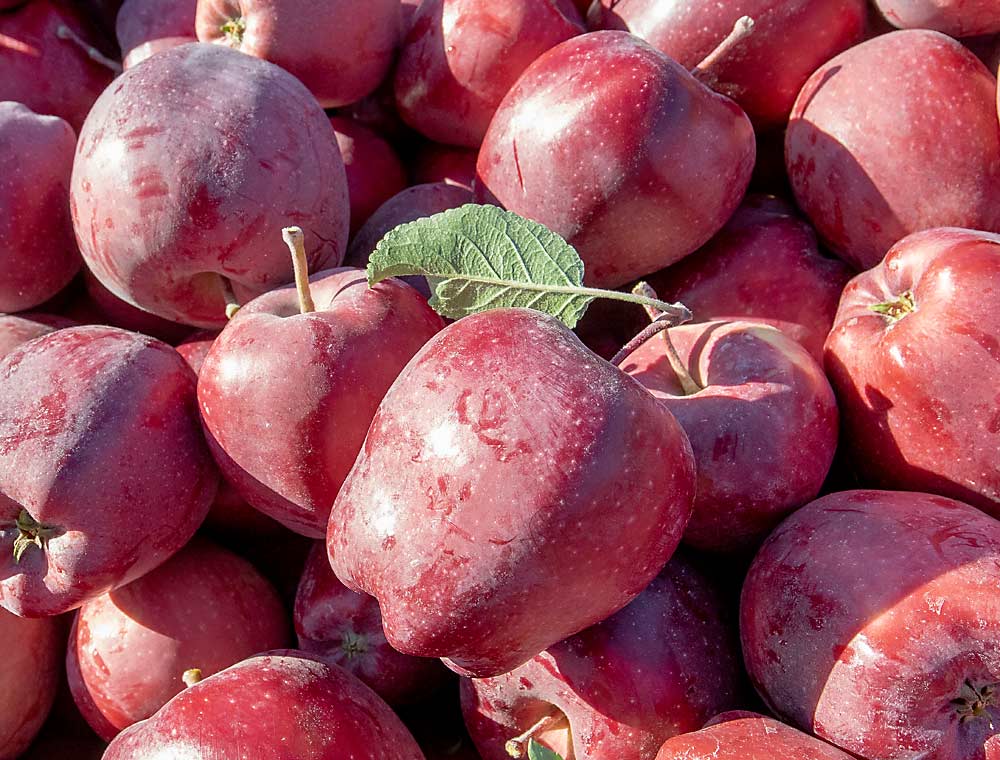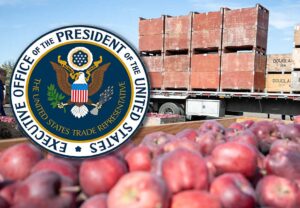
For the first time in four years, U.S. shippers began selling apples to India in significant amounts.
Washington exporters were encouraged by the number of shipments already made from the 2023–24 crop when Good Fruit Grower reached out in November. They were also hopeful about the long-term prospects of re-entering the Indian market, but they weren’t expecting sales to return to the volumes seen before U.S. apples were caught up in a tariff dispute — back when they shipped 8 million boxes to India.
“The days of shipping that many apples are over,” said Steve Reinholt, export sales manager for Oneonta Starr Ranch Growers. “We have to claw our way back into the market. It’s going to take time.”
As of Nov. 15, Washington state had shipped 306,465 40-pound boxes to India. By that point in 2022, the state had shipped 5,315 boxes, said Washington Apple Commission President Todd Fryhover.
This season’s large apple crop — estimated as the second largest on record, with some 140 million boxes harvested — means breaking back into the Indian market is imperative, apple commission board members said at their October meeting.
Last summer, the Indian government lifted a 20 percent tariff on U.S. apples it had enacted in 2019 in retaliation for U.S. tariffs placed on steel and aluminum. That tariff was added to an existing 50 percent tariff India places on all apple imports. The 70 percent tariff basically pushed U.S. apples (the vast majority of which came from Washington) out of the Indian market. Before the additional tariff was in place, Washington apples accounted for 53 percent of the Indian market. By 2023, that fell to 1 percent, according to the commission.
U.S. exporters are finding a much more competitive Indian apple market than the one they left a few years ago. Indian growers are producing a significant amount of domestic fruit, and other countries have stepped in to fill the vacuum left by the United States, said Northwest Horticultural Council President Mark Powers.
The biggest player is probably Turkey, which grows a lot of Red Delicious (a popular variety in India), has shorter transit times and lower freight and production costs than the United States. European producers such as Poland, Italy and France are filling the market, too, Fryhover said.
The varietal mix has also gotten more complicated. In the past, Red Delicious made up more than 90 percent of shipments to India, with the remainder filled out by Gala, Fuji and Granny Smith. When the 2023 season started, Galas were the top export variety for a few weeks, but as soon as Red Delicious was ready for harvest, it resumed its role as the largest variety shipped to India, Fryhover said.
Gala will probably play a bigger role in the Indian market in the future. There’s potential for Cosmic Crisp, too, as it continues to grow in volume. But any varietal shift won’t happen overnight.
“Even though Red Delicious volume is going down in Washington, it will continue to be a major player in the years to come,” Fryhover said.
In November, Fryhover was planning a December trip to India to reintroduce Washington apples to importers. Out of WAC’s $8.6 million export market funding for the 2023–24 season, only $200,000 was allocated to India, he said, but more could be added.
Stemilt Growers was shipping to India in November. Export sales manager Dave Martin said there was a lot of interest from buyers, but regaining market share will be a struggle. Four years ago, Stemilt shipments were “99 percent Red Delicious,” but the company has removed most of its Red Delicious acreage and will have to develop a market niche for its Galas and Fujis.
Outside the Pacific Northwest, no major apple exporters had made shipments to India by early November, but some were in talks with Indian buyers, said Will Callis, executive director of the U.S. Apple Export Council.
The Indian market looked promising. U.S. apples were already competing on price, and it was estimated that Indian production regions had lost nearly a third of their 2023 crop due to poor weather, he said.
“We are very enthusiastic about the possibilities in India,” Callis said. “We believe that with the reputation for quality that U.S. apples have, and competitive pricing, we will be able to regain market share.”
It will take a few months to measure the full impact of India reopening its market. In past years, shipments to India didn’t really pick up steam until December, after Indian consumers had moved through their domestic crop.
“It’s really early to make big judgments,” Martin said in November. “December and January will give us a true indication of what the market will be.”
—by Matt Milkovich








Leave A Comment